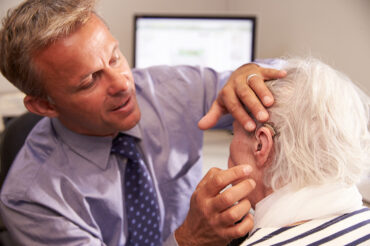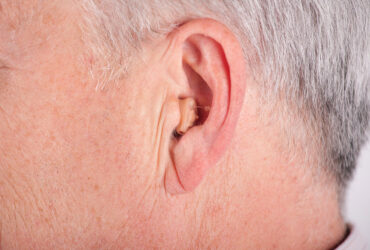(BPT) – Baby boomers grew up listening to The Who’s Live at Leeds and other albums with liner notes that admonished young rockers to “play it loud” or “turn it up.” For the generation that grew up blasting stereos until the bedroom windows rattled and attending rock concerts that left ears ringing for a week or more, it’s little surprise that many are experiencing hearing loss.
Numerous conditions, including illnesses, medications and exposure to loud noise can cause hearing loss in people of any age. But, when it comes to members of the baby boomer generation, there is little doubt that excessive noise exposure is the most common culprit. In fact, an estimated 26 percent of boomers have been diagnosed with hearing loss.
It’s unfortunate that the very thing this generation enjoyed the most has resulted in losing the ability to hear the full range of treble tones, bass notes and subtle virtuosity of the music loved so much. The good news is that with today’s hearing aids, it’s possible to bring music back.
Many baby boomers are reluctant to seek treatment for hearing loss because they still envision hearing aids as the devices their parents used: clunky-looking things that made everything equally loud and unnatural-sounding. But, modern hearing aids have come a long way.
More than just amplification – sound quality
While listening to music as loudly as possible was always an essential part of rock-and-roll culture, boomer fans also demanded the highest possible quality – every instrument in balance, every voice crystal-clear. If this was you, you may be understandably reluctant to trust hearing aids to provide a listening experience free of distortion and that “tinny” sound.
Modern hearing aids are designed with quality in mind. Instead of simply raising the volume on sound, they balance and direct the sounds wearers want to hear, lifting them above unwanted noise and transmitting them in as pure a form as state-of-the-art technology can provide. The most advanced hearing aids have technology that can even detect if you are in a car, at a concert, in a noisy restaurant, or having a cozy conversation – and then shapes the sound for that environment.
Many boomers have tinnitus (also known as that annoying ringing in the ears with no outside cause), thanks to all those rock concerts or time served in the armed forces. Many hearing aids include tinnitus therapy features that can bring relief. This feature can significantly improve your life while the hearing aids enhance your hearing.
Advanced wireless technology – stay connected
Many digital hearing aids feature telecoils, FM, Bluetooth, and other wireless technologies that allow hearing aids to connect to telephones, iPods and other MP3 players, cellphones and assistive listening systems. By using a combination of hearing aids and streaming accessories, digital hearing aids can connect to almost any device’s audio output.
When the music fades – what to do next
Here are the three basic steps for confronting your hearing loss:
1. Accept hearing loss for what it is. It doesn’t matter if your hearing loss is the result of too many rock concerts in your youth or simply aging, it is not a weakness or personal failing. It’s a medical condition, like any other, and shouldn’t be ignored or covered up.
2. Contact a hearing care professional. Your personal physician can probably provide a referral or you can go online to locate a hearing care professional in your area. Schedule an appointment and get your hearing tested. Once you know whether you are dealing with mild, moderate or profound hearing loss, you can discuss treatment options.
3. Accept that treatment may involve getting hearing aids. Most hearing care professionals today recognize two hearing aids are most often required, so that your hearing is made equal in both ears (binaural hearing).
Don’t let vanity keep you from wearing hearing aids any more than you would allow it to keep you from wearing glasses to improve your vision. These discreet, yet powerful devices can put you back in step with the rest of the world. More importantly, you’ll soon be able to enjoy those old vinyl albums stored in your attic again and party like it’s 1969.
Related items
Why Our Hearing Worsens As We Age
The physical process of hearing is a marvel – wonderful sounds like music, conversation wi
6 Steps of Hearing – How We Understand Sounds and Speech
The five senses – hearing, seeing, smelling, touching and tasting – are each a wonder to b
What are the Signs of Hearing Loss?
If you have a hearing loss, sounds may seem loud enough, but not clear. People may seem to






